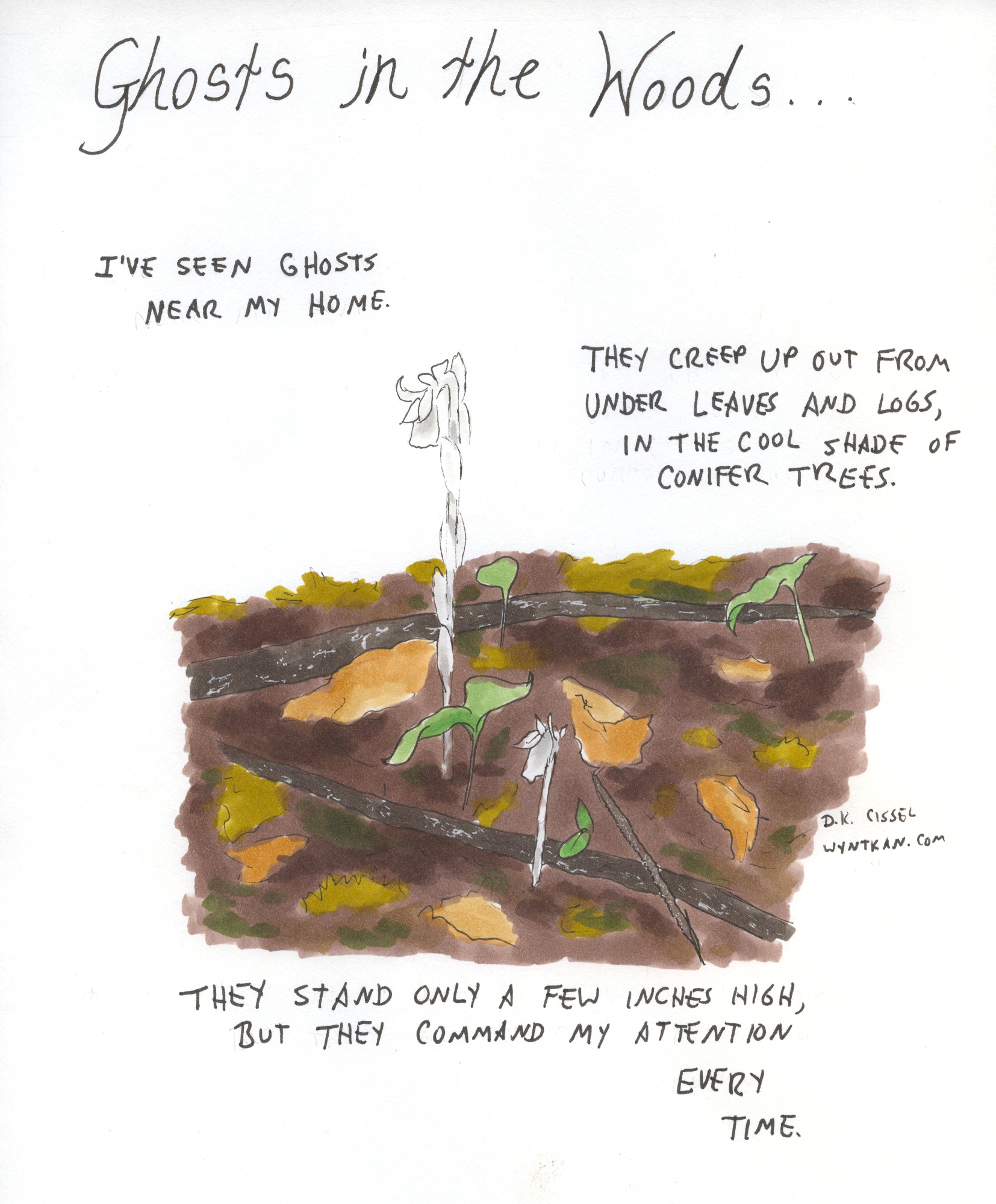
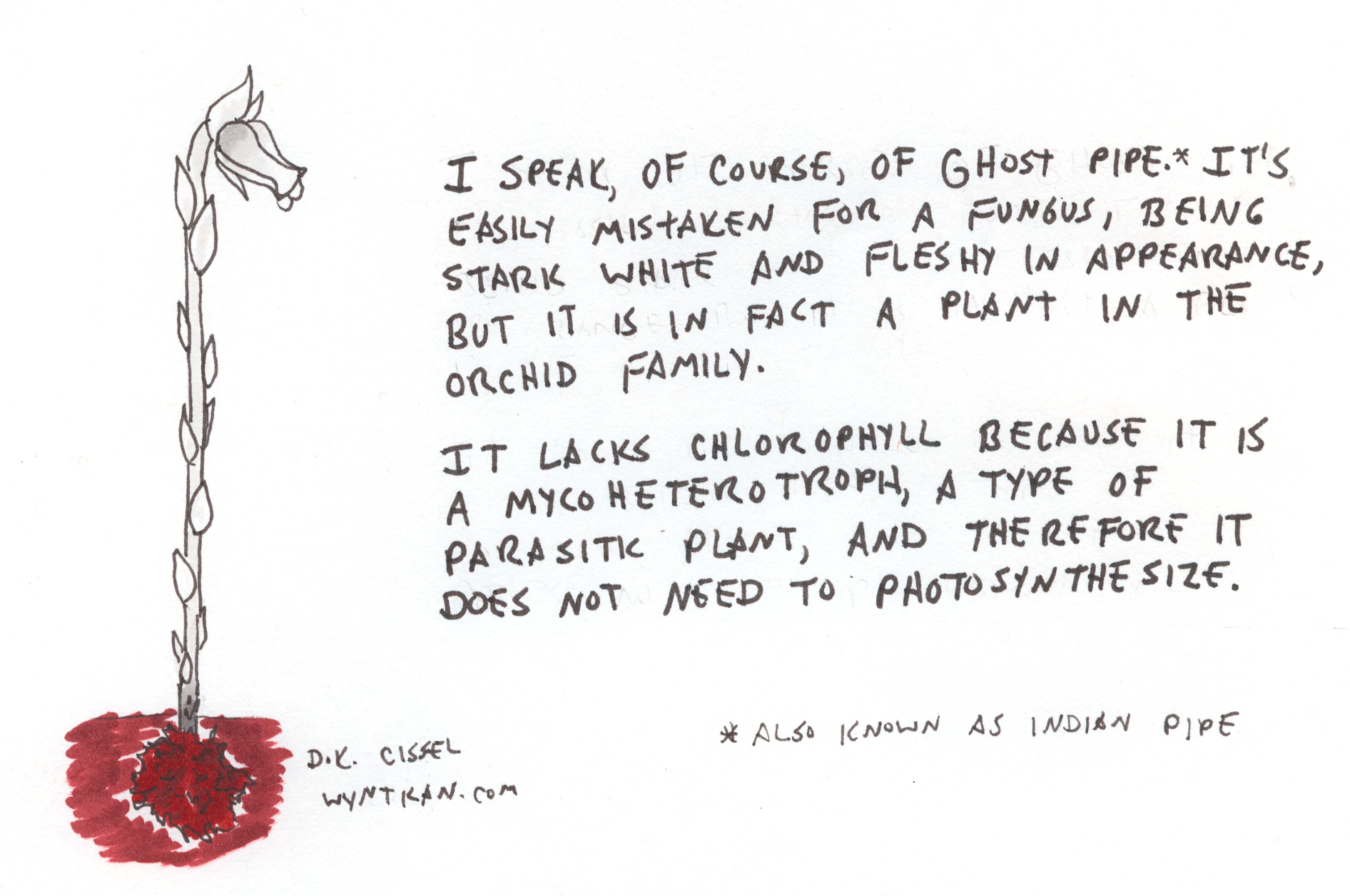
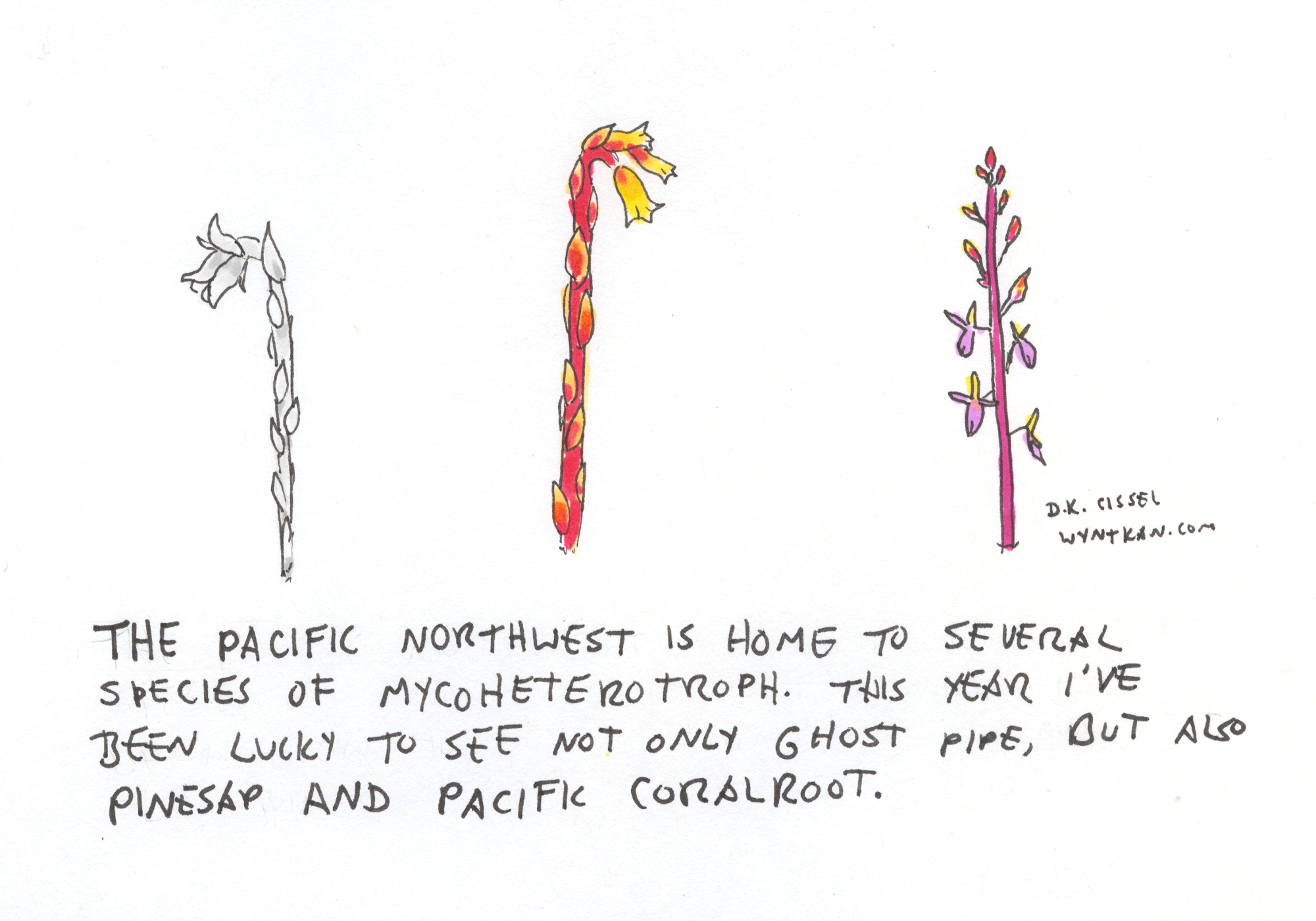
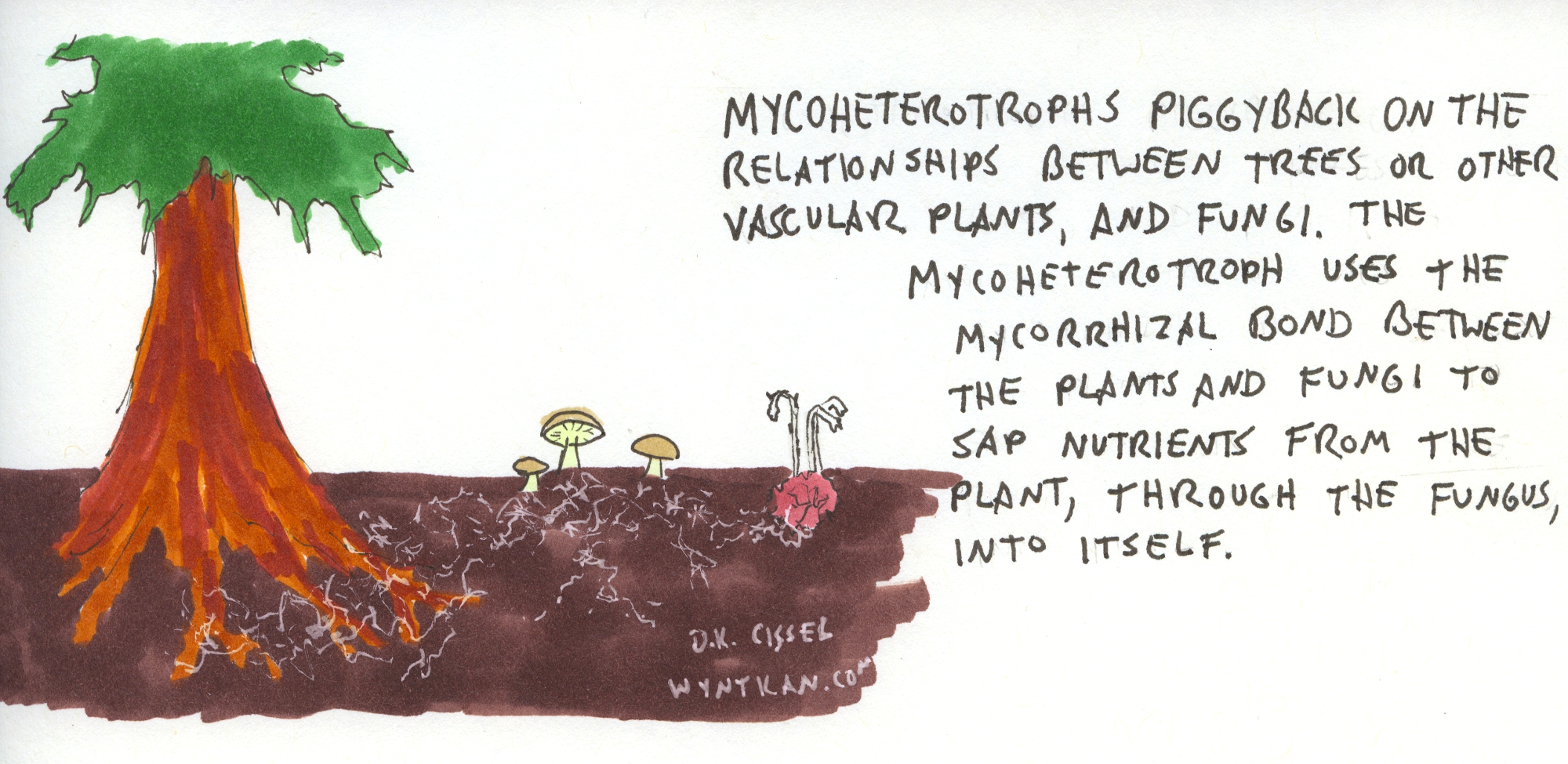
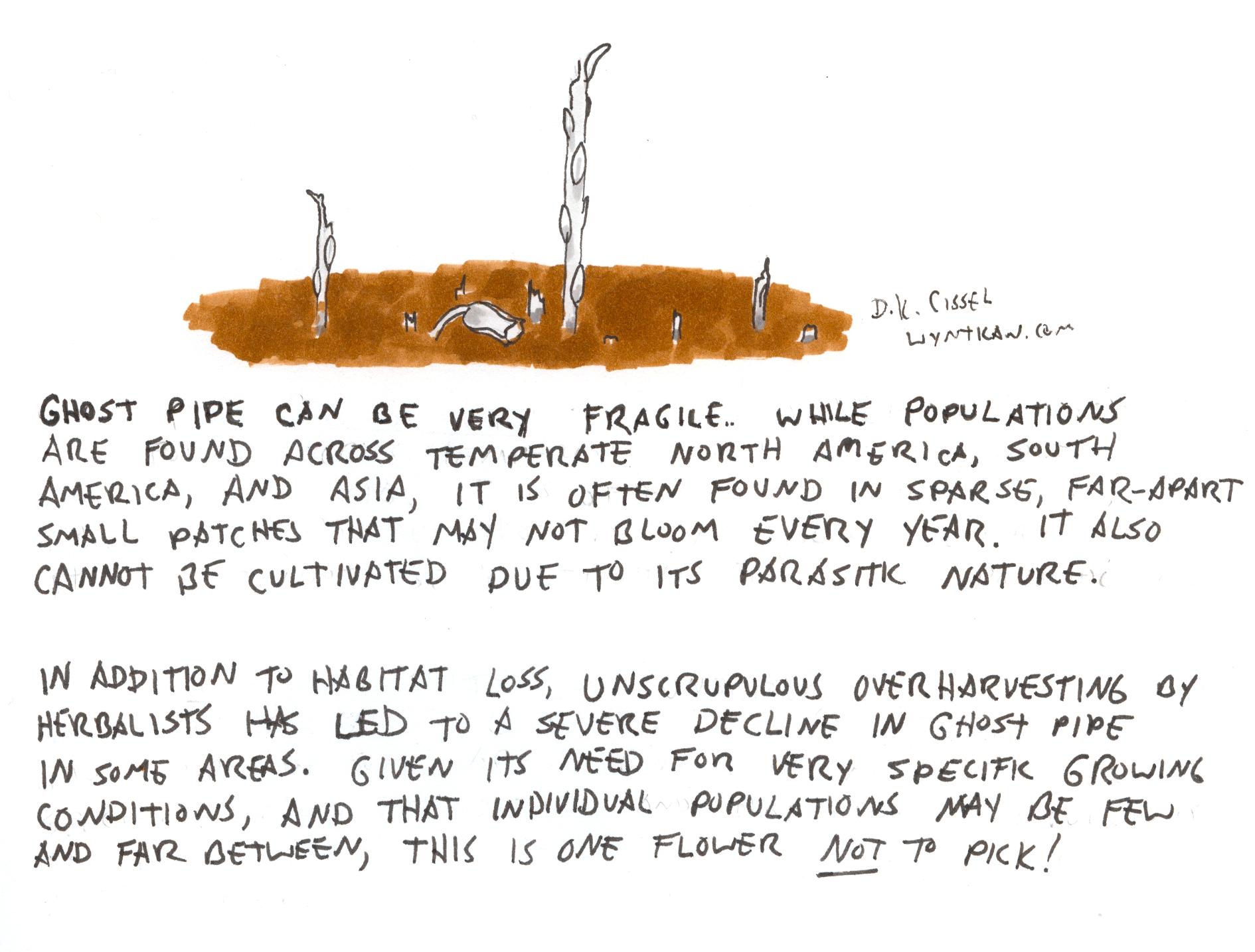
If you are so fortunate as to find ghost pipe, instead of yanking it out of the ground, find a different, more common and renewable medicinal plant to harvest and look into how to protect the land that this increasingly rare plant needs to survive. Habitat loss causes more species to go extinct than any other single factor, and because mycoheterotrophs in general need such particular conditions to grow in, it’s harder for them to find new habitat when existing places are destroyed. Organizations such as the Nature Conservancy actively work to buy and protect wild land from development and other devastation; you may also have a more regional or local group doing the same thing in your neighborhood. Any organizations doing reforestation and other habitat restoration are worth supporting as well. You also may wish to study which trees or other plants seem to be feeding your local ghost pipe, and what fungi facilitate this transfer of nutrients, so as to better understand this unique interaction.
Species portrayed: ghost pipe (Monotropa uniflora), pinesap (Monotropa hypopitys), Pacific coralroot (Corallorhiza mertensiana)

Your drawings are exquisite! Makes me want to look for a ghost pipe.
Thank you 🙂